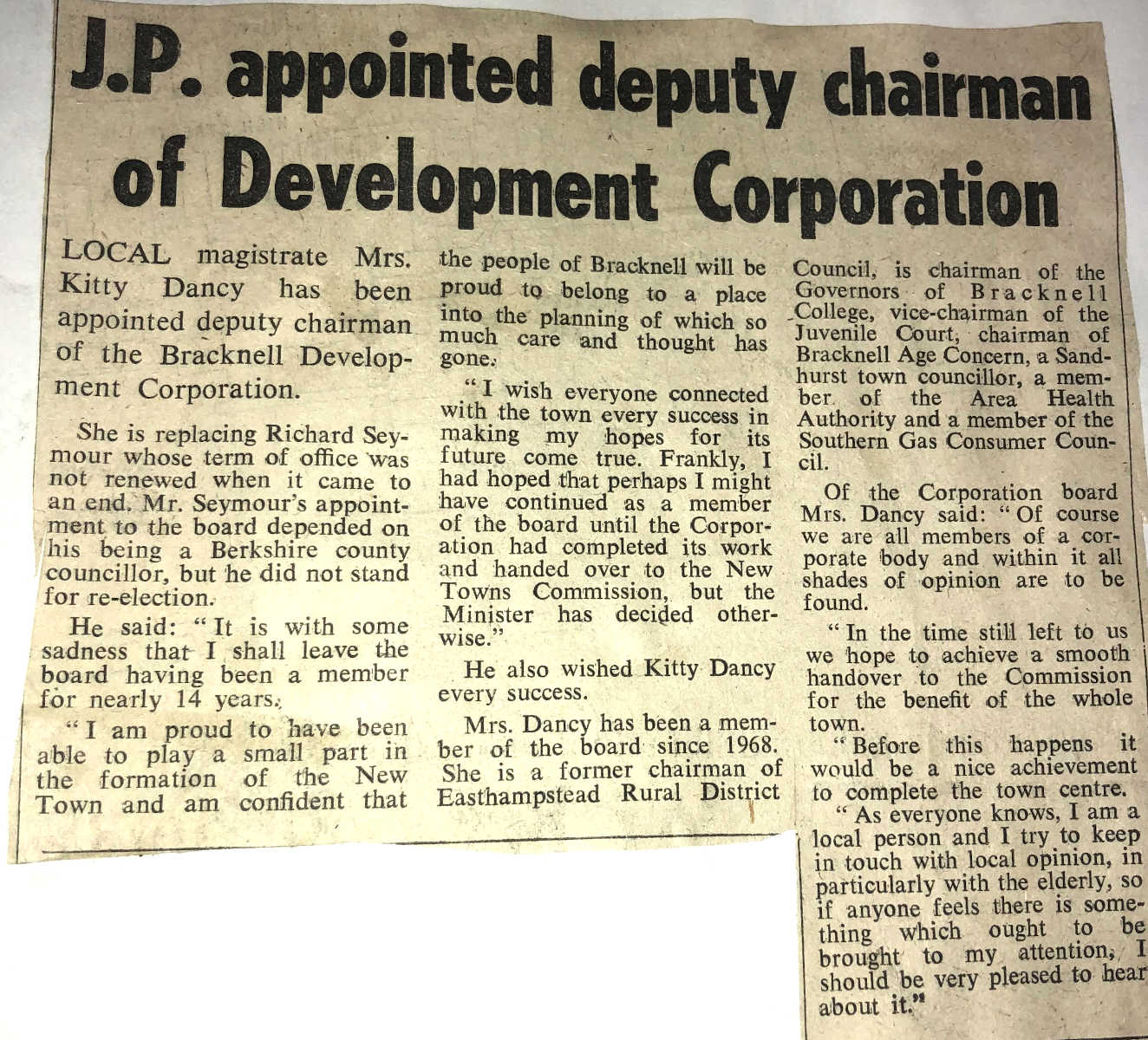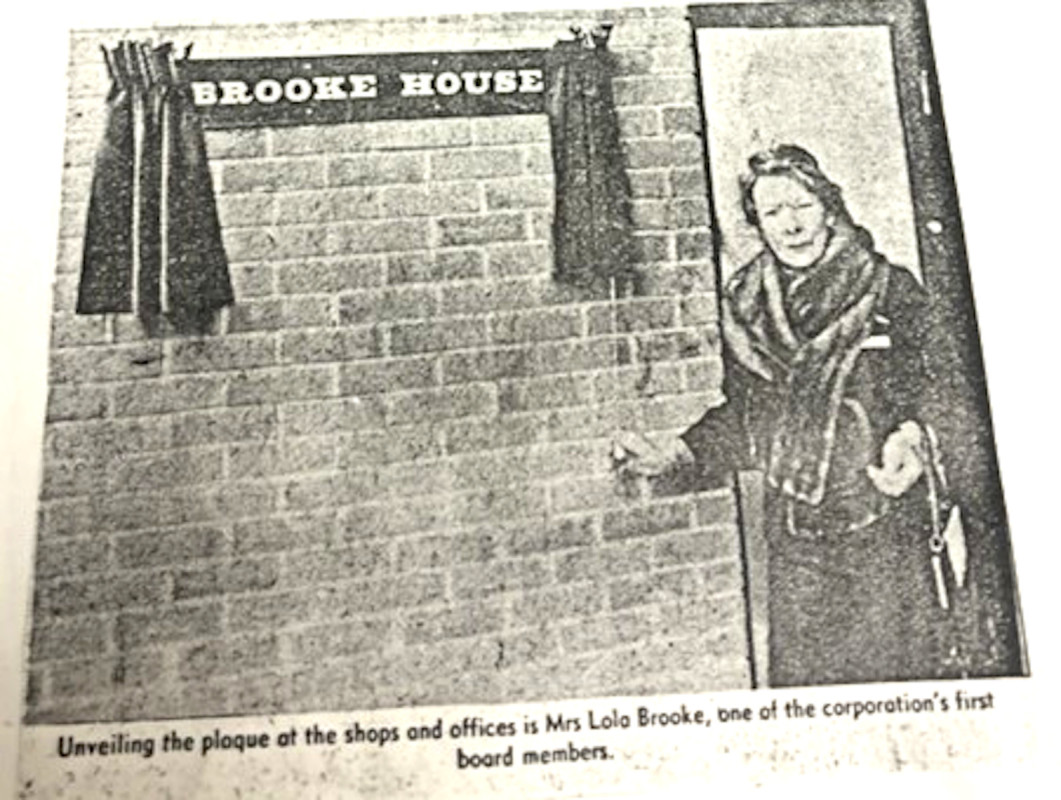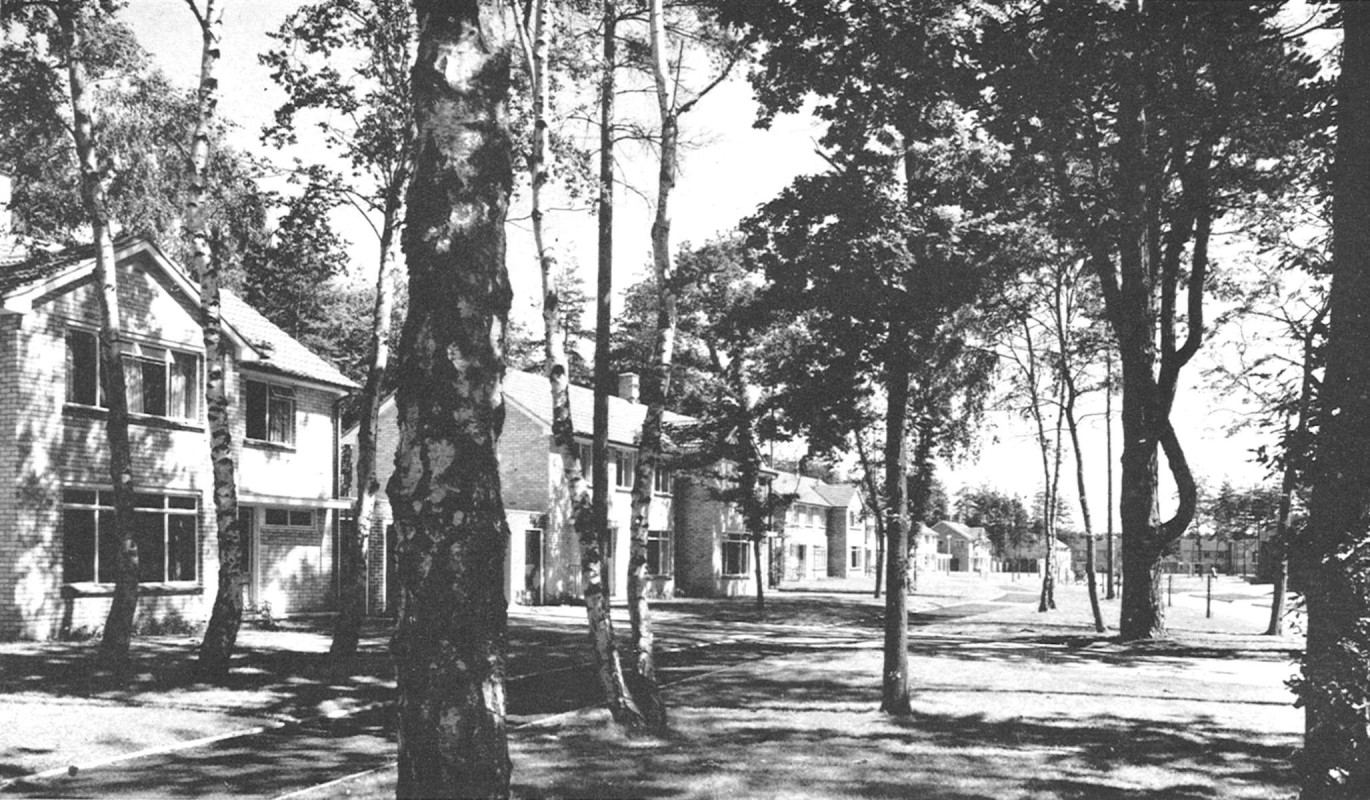Women in the Bracknell Development Corporation
In celebration of International Women’s Day on 8th March, we want to shine a light on some of the women who worked for the Bracknell Development Corporation (BDC), helped Bracknell New Town be built and enriched the lives of Bracknell residents. Our Project Archivist, Evangeline Mills, is working on a yearlong project to catalogue, preserve and conserve the records of the Bracknell Development Corporation and has written this article about the women she has discovered amongst the collection.
The Bracknell Development Corporation was formed on 21st October 1949 by the New Towns Act 1946. The BDC had a huge task ahead of them; to create, plan and construct all aspects of Bracknell New Town including homes, factories, offices, roads, and much more. New Town Development Corporations were predominately made up of men; women mostly worked as secretaries or assistants, and it was rare for women to hold a high-ranking position. Some Development Corporations had a woman on their Board, but this was unusual, and the role women played in Development Corporations is largely unknown. In the Bracknell Development Corporation, several women played important roles.
Board member and Deputy Chairman

One of these was Kathleen ‘Kitty’ Dancy who served as a BDC Board member from 1968 until the BDC’s dissolution in 1982. Dancy was the Chairman of the Easthampstead Rural District Council and a Justice of the Peace prior to being appointed to the Corporation’s Board and was a councillor for Sandhurst during her time at the Development Corporation.
This image shows Kathleen Dancy upon her appointment to the Bracknell Development Corporation Board, Bracknell News, 25th January 1968 (ref. NTB/G/26/1/10).

In September 1977 Dancy was appointed Deputy Chairman of the BDC, a role she served in until the Corporation’s dissolution in 1982. As Deputy Chairman, Dancy was the second highest ranking member of the Corporation and would oversee decisions about the construction and development of Bracknell, stand in for the Corporation’s Chairman when they were unable to attend meetings and would open new buildings and attend events (ref. NTB/G/26/1/26).
In 1982 she was awarded an OBE in the New Years Honours because of her service to the Development Corporation, a significant achievement.
On the Corporation’s Board
From its first meeting in November 1949, the Bracknell Development Corporation had two female Board members: Eva Jarvis and Lillian ‘Lola’ M Brooke. Jarvis served on the BDC’s Board from 1949 until 1963 and Brooke served from 1949 until 1967.
Board members were appointed by the Minister for Housing and Local Government and its successors the Minister for Planning and Local Government and the Department of Environment, and a term lasted three years. Jarvis and Brooke were both reappointed to the BDC Board several times prior to resigning, as seen in the records (ref. NT/B/G/1/4/1). Board members were only reappointed if the Minister believed they played a beneficial role to a Development Corporation.


Brooke also served on the Bracknell Licensed Committee alongside Lady Dundas, wife of BDC Chairman, and former General Manager, Sir Ambrose Flux Dundas, and Kathleen Dancy. All pubs, restaurants and shops had to seek approval from the Bracknell Licensed Committee to allow them to sell alcohol within Bracknell. The Licensed Committee, as such, controlled who could sell alcohol in Bracknell, where they could sell it and how they could sell it. The committee played a powerful role in shaping how Bracknell and its communities formed.
Brooke even had a building named after her in Bracknell by the Bracknell Development Corporation. This press cutting shows Brooke unveiling Brooke House, High Street, Bracknell upon the completion of its construction in 1980 (ref. NTB/G/26/1/32). Brooke House now is the site of the Bracknell Forest Council Offices.

Housing Bracknell’s residents and building communities
Another important woman who worked for the Bracknell Development Corporation was EP ‘Phyllis’ Cockburn who was the Corporation’s Housing Manager for nineteen years, from 1959 until 1975. These press cuttings are from when Phyllis was Housing Manager and upon her retirement from the Corporation in 1975.

Reading Mercury, 10th April 1965 ref. NTB/G26/1/10.

Bracknell News, 30th January 1975 ref. NTB/G26/1/21.
As Housing Manager, Phyllis helped attract new residents to Bracknell, relocated people from overcrowded and heavily bombed London to Bracknell, helped residents settle in and handed over properties to new tenants and buyers. She worked with firms to determine how many houses their employees may need, if any firms intended to expand and how much additional housing would be needed, as well as working with architects to meet the demand for housing. This was a front-line position and Phyllis probably was well known to many in Bracknell New Town, even more so than the Corporation’s Board members who residents may have never met or met only once.
Records show that Phyllis was welcoming to new residents and made people “feel cared for, that there was somebody in Bracknell who was looking after their interests” which encouraged people to stay, continue working and settle into their new communities (ref. NTB/G/26/2/4).

Phyllis Cockburn played a huge role in helping people and companies settle in Bracknell which enabled Bracknell to become so successful.
Bracknell’s natural landscape
Bracknell New Town was built to preserve as much of its natural environment as possible. In 1950 the BDC hired Landscape Consultant Architect Sheila Haywood. Haywood carried out a survey of Bracknell, which had had lots of woodland including pine, oak, and chestnut trees, among others. Haywood was a member of the Institute of Architects and designed the gardens of many great homes as well as Churchill College (ref. NTB/G/26/2/4).

Haywood’s survey had a far-reaching impact, and when coupled with the decisions of the BDC’s Architects, meant that much of Bracknell’s woodlands was incorporated into residential neighbourhoods and additional trees, shrubbery and flowers were planted by the BDC around homes and buildings to fit in with Bracknell’s natural environment. Homes in Nightingale Crescent, Harmans Water, Bracknell are just one example of this which can be seen in this image (ref. NT/B/G/7/13).

During the 1960s Haywood also designed landscapes for Corporation housing in the Bullbrook neighbourhood including gardens and other green spaces.
All these women played an important role in the Bracknell Development Corporation and their accomplishments have helped make Bracknell one of the most successful New Towns in the UK.
There are many intriguing records in the Bracknell Development Corporation Collection and we hope to share more discoveries as the project progresses.
[Please note that the Bracknell Development Corporation Collection is currently being catalogued and may not be available to order at this time.].
